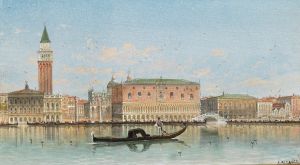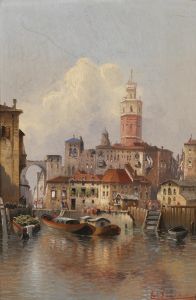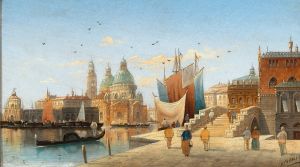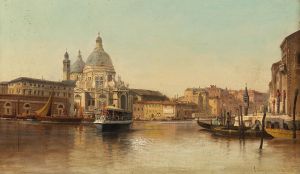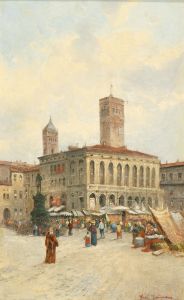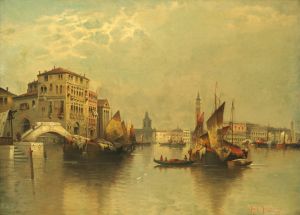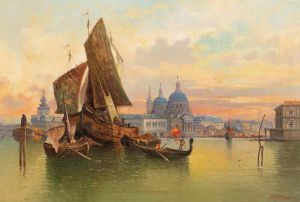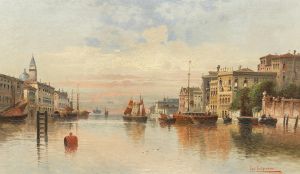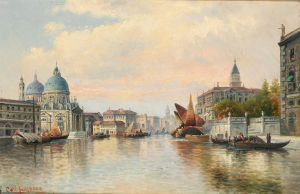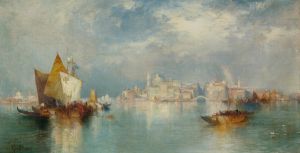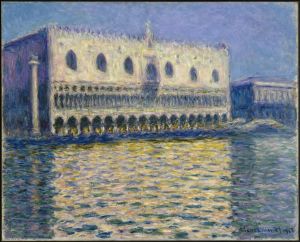
Venedig
A hand-painted replica of Karl Kaufmann’s masterpiece Venedig, meticulously crafted by professional artists to capture the true essence of the original. Each piece is created with museum-quality canvas and rare mineral pigments, carefully painted by experienced artists with delicate brushstrokes and rich, layered colors to perfectly recreate the texture of the original artwork. Unlike machine-printed reproductions, this hand-painted version brings the painting to life, infused with the artist’s emotions and skill in every stroke. Whether for personal collection or home decoration, it instantly elevates the artistic atmosphere of any space.
Karl Kaufmann was an Austrian painter known for his detailed and atmospheric landscapes and cityscapes. Born in 1843 in Neuplachowitz, Silesia, which was then part of the Austrian Empire, Kaufmann developed a reputation for his depictions of European cities, particularly Venice. His works are characterized by their meticulous attention to architectural detail and their ability to capture the essence of the locations he painted.
One of Kaufmann's notable works is "Venedig," a painting that showcases his skill in rendering the iconic city of Venice. Venice, with its unique network of canals, historic architecture, and vibrant cultural life, has long been a source of inspiration for artists. Kaufmann's "Venedig" is a testament to his ability to convey the city's charm and complexity through his art.
Kaufmann often employed a realistic style, focusing on the interplay of light and shadow to bring his scenes to life. In "Venedig," he captures the serene beauty of the Venetian canals, the grandeur of its palaces, and the bustling activity of its streets. The painting reflects his keen eye for detail and his dedication to portraying the architectural splendor of Venice with accuracy and elegance.
Throughout his career, Kaufmann traveled extensively across Europe, drawing inspiration from the diverse landscapes and cityscapes he encountered. His travels informed his work, allowing him to create paintings that were not only visually appealing but also culturally and historically resonant. Venice, with its rich history and distinctive atmosphere, was a recurring subject in his oeuvre, and "Venedig" is a prime example of his fascination with the city.
Kaufmann's paintings were well-received during his lifetime, and he exhibited his works in various art shows and galleries. His ability to capture the essence of a place made his paintings popular among art collectors and enthusiasts. Today, his works are appreciated for their historical value and their contribution to the genre of landscape and cityscape painting.
While specific details about the creation and exhibition history of "Venedig" are not widely documented, the painting remains an important part of Kaufmann's body of work. It exemplifies his mastery of the landscape genre and his particular affinity for the city of Venice. Kaufmann's legacy as an artist is marked by his ability to transport viewers to the locations he painted, offering a glimpse into the beauty and complexity of 19th-century Europe.
Karl Kaufmann passed away in 1905, leaving behind a rich legacy of paintings that continue to be admired for their technical skill and evocative portrayal of European locales. His work, including "Venedig," remains a valuable part of art history, offering insight into the artistic trends and cultural landscapes of his time.







